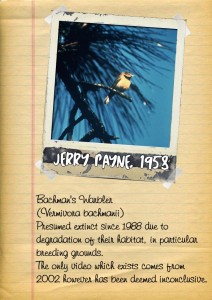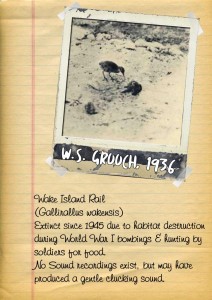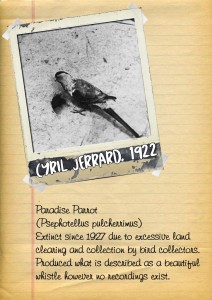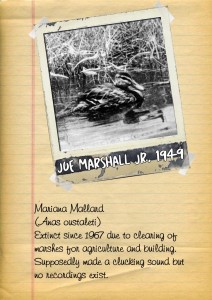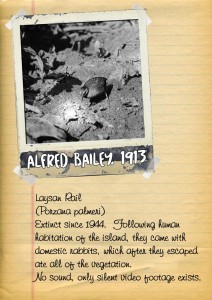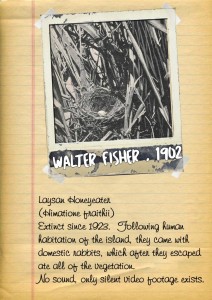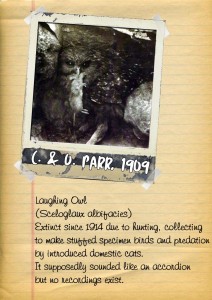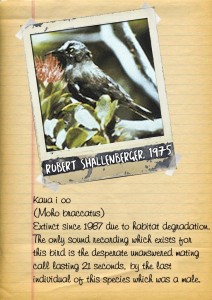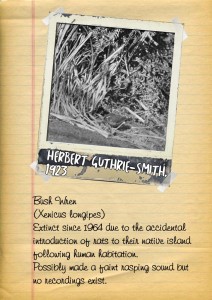What is the problem?
Species around the world are disappearing at an alarming rate due to human made problems. This is a global issue, however one type of animal where it is very easy to see, and where the human impact is incredibly clear (often due to the introduction of species such as cats, hunting or removal of nest sites) is amongst birds.
Where is the problem?
This is a potentially global problem and it seems like there is nowhere that is safe for birds. The map below shows where the species in our silent aviary have gone extinct, and these 10 birds are just a snapshot of the animals which have disappeared in the past 100 years. From New Zealand and Australia to Hawaii and mainland USA birds can disappear without a trace in a very short time. Whilst it is often island species with small populations (and generally in the case of birds when a predator such as rats or cats are introduced) which go extinct, that isn’t always the case.
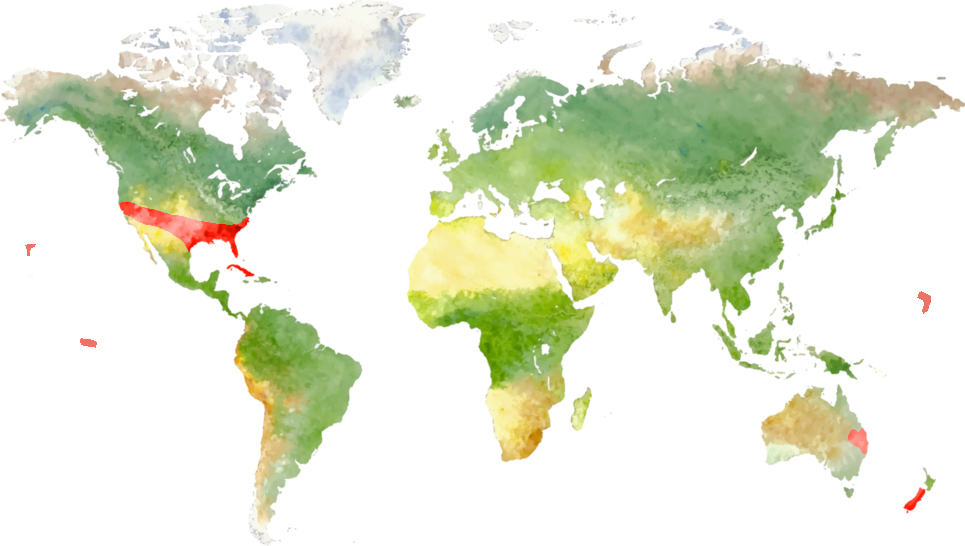
How are we trying to solve it?
Most people don’t even know the rate at which species are going extinct. It is a part of nature that species die out and are replaced by others, however due to problems caused exclusively by humans, this rate of extinction is occurring much faster today than it ever has done. Many scientists argue that we are currently going through a mass extinction event. Generally these are caused by natural disasters or environmental changes, with this being the first one caused by another species (us).
With this space given to us by Wingham Wildlife Park we are trying to make people aware of the issue and to let them know that there are things we can do to at least slow down the decline of so many species. We also use it as a way to effectively raise fund for our work with the World Land Trust and their project in Khe Nuoc Trong, Vietnam.
Why “the Silent Aviary”?
Bird song surrounds us in our every day lives, and throughout the park you can hear animal noises in most areas. As you walk down the rainforest SOS area you will hear recordings of bird songs, which get quieter as you reach the end of the walk – as the rainforest diminishes. As you turn the corner, there are no bird songs, the information signs have turned brown and you are confronted with the aviary showing merely photos (where these are available) of bird species which have gone extinct in recent history.
